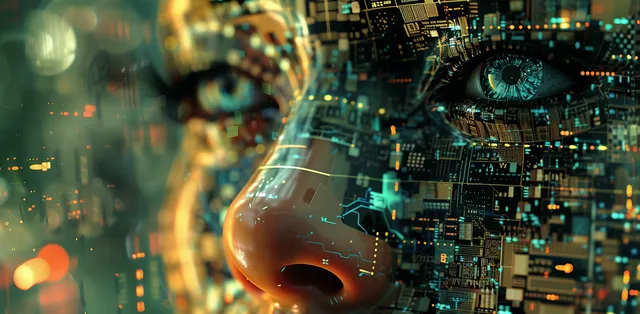Can AI Be Truly Creative? A Multifaceted Inquiry

The question of whether AI can truly exhibit creativity remains a topic of heated debate. This discourse touches upon various dimensions, including the mechanisms through which AI generates new content, the limitations inherent in its design, and the broader philosophical and ethical implications.
How AI Creates Novel Content Without Sentience
AI generates original content through sophisticated algorithms, vast datasets, and advanced pattern recognition, rather than through any form of sentience or consciousness. This process unfolds through several stages:
1. Data Input and Training
AI models, especially those leveraging machine learning and deep learning, are trained on extensive datasets comprising human-created content across various domains.
Textual Data: Language models like GPT-4 are trained on diverse written materials sourced from books, articles, and websites.
Visual Data: Image generation models such as DALL-E utilize millions of images tagged with descriptions.
Musical Data: Music generation models learn from a wide array of musical compositions spanning different genres and styles.
2. Pattern Recognition
During the training phase, AI models identify intricate patterns, structures, and relationships within the input data.
Learning Syntax and Grammar: For text, the model understands rules of syntax and grammar, sentence structures, and contextual influences on meaning.
Identifying Features: In images, the model discerns shapes, colors, textures, and spatial relationships.
Understanding Composition: For music, the model grasps elements like melody, harmony, and rhythm.
3. Generative Processes
Once trained, AI models employ various techniques to create new content.
Sampling and Variability: Models generate new instances by sampling from learned data distributions, combining elements in innovative ways.
Transformations and Combinations: AI can transform existing elements (e.g., changing an image's style) or combine elements from multiple sources to craft novel outputs.
Stochastic Processes: Many models introduce variability through probabilistic methods, enhancing originality.
4. Algorithms and Techniques
Several advanced algorithms underpin AI's content creation capabilities:
Generative Adversarial Networks (GANs): GANs involve a generator creating data instances and a discriminator evaluating their authenticity, refining the generator's output.
Variational Autoencoders (VAEs): VAEs encode data into a lower-dimensional space and decode it, generating new data that resembles the original.
Transformers: Models like GPT-4 use transformer architectures to process and generate sequential data, predicting the next element based on context.
5. Human-like Creativity
AI mimics certain aspects of human creativity by:
- Blending elements from different sources to produce unique outcomes.
- Efficiently generating multiple variations and iterations for human refinement.
- Introducing randomness to produce unexpected results.
AI's ability to generate new content is fundamentally distinct from human creativity, which is driven by consciousness, emotions, and personal experiences. However, AI's outputs can be novel and valuable, positioning it as a potent tool for augmenting human creativity.
The Creativity Debate: Can AI Be Truly Creative?
Creativity is broadly defined as the ability to produce original and valuable ideas, encompassing novelty and utility. Yet, AI's creativity is constrained by several limitations:
1. Understanding and Intent
AI lacks understanding, intent, and consciousness. Its creativity does not stem from personal experiences or emotions, which are pivotal to human creativity.
2. Original Thought
AI's generative process relies on existing data, making its "creativity" inherently derivative. It generates new content based on learned patterns from human-created content.
3. Context and Interpretation
Human creativity involves deep contextual understanding and nuanced interpretation, areas where AI currently falls short.
Examples of AI-Driven Creativity
Despite these limitations, AI has demonstrated impressive creative capabilities in various fields:
Art and Music: AI systems like DALL-E and OpenAI's MuseNet have produced remarkable artworks and musical compositions.
Writing: Models such as GPT-4 can craft poems, stories, and articles that sometimes rival human writing.
Scientific Discovery: AI aids in discovering new materials and drugs, showcasing its potential in scientific creativity.
Augmenting Human Creativity
AI enhances human creativity by:
- Generating ideas or drafts for human refinement.
- Freeing humans to focus on creative aspects by handling mundane tasks.
- Suggesting unconventional ideas that might inspire new creative directions.
Philosophical and Ethical Considerations
The rise of AI-driven creativity prompts significant philosophical and ethical questions:
Authorship and Ownership: Who owns the rights to AI-generated creations—the developers, the users, or the AI itself?
Valuing AI Creativity: Should AI-generated works be valued on par with human-generated ones, considering their emotional and cultural significance?
In a Nutshell
While AI exhibits behaviors that appear creative and significantly augments human creativity, it lacks the subjective experience and intrinsic motivation that characterize human creativity. Thus, AI's creativity is best viewed as an extension of human creativity rather than true, independent creativity. Nonetheless, its potential as a powerful tool for expanding creative horizons is undeniable, marking a new era in the interplay between technology and human ingenuity.